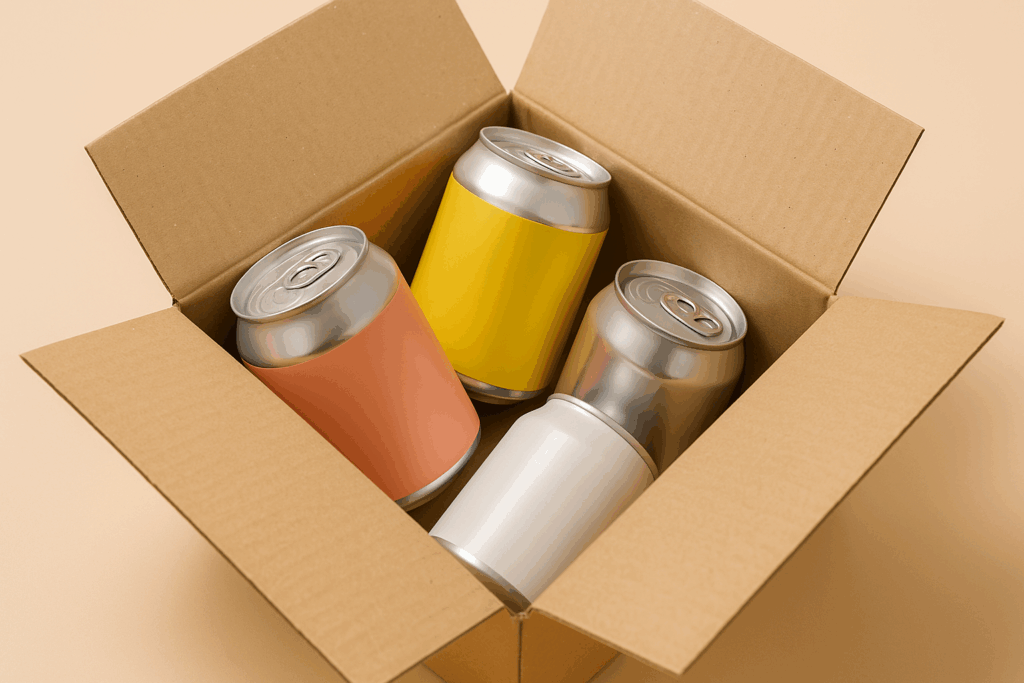Packaging isn’t just about aesthetics or keeping products safe anymore. It’s become a powerful touchpoint for deeper customer connection and QR Codes are right at the heart of that shift. What used to be a static box or bottle is now a tool that can educate, engage, and even convert.
In this blog, we’ll walk you through how to use QR Codes strategically and not just for show, but in ways that genuinely add value for your audience. Whether you’re in F&B or other industries, you’ll find smart and actionable tips on turning your packaging into a storytelling platform and a digital gateway for your brand. Let’s start with why QR Codes matter more than ever today.
What Are QR Codes on Packaging and Why Do They Matter?
Quick Response Codes or QR Codes are those little black-and-white squares you can scan with your smartphone. But on packaging, they’re so much more than just a techy add-on.
They’re a bridge between your product and a digital experience. With a quick scan, customers can dive into a how-to video, learn about your brand’s sustainability practices, or unlock a loyalty reward.
According to Uniqode, about 60% to 65% of people use QR codes daily across marketing, payments, and other practical purposes, highlighting how common it is for customers to scan QR codes on packaging to learn more before buying.
QR codes on packaging are no longer just an extra but they’re a part of packaging strategies:
- Transparency: QR codes on packaging let brands share product details without crowding the label.
- Sustainability: Instead of printing long instructions or leaflets, brands can use QR codes to give that information digitally.
- Interactivity: QR codes can link to rewards programs, events, games, or special offers that increase customer engagement.
- Customer Convenience: With QR codes on packaging, customers can easily find what they need. Instead of searching online, customers can scan the code and get instant access to product information.
- Traceability: QR codes help track product batches especially for regulated items. This makes it easier to manage inventory and handle quality issues quickly.
Placement of QR Codes
To get the most value from QR codes on packaging, place them where customers are most likely to see and scan them. Here’s how different types of packaging affect visibility and use:
Primary Packaging
This is the packaging that comes into contact with the product, like a yogurt cup. Customers notice the QR codes each time they use the product, therefore, adding them here works great.
However, there may not be much space for a QR code due to space constraints, particularly for food products that must display necessary information.
Secondary Packaging
This is the external display box or container. It can attract customers’ attention and provide an additional space. This packaging’s QR codes encourage in-store interaction and direct customers to additional information before making a purchase.
However, after making a purchase, the majority of buyers discard the additional packaging, which restricts the code’s long-term availability.
Tertiary Packaging
The cardboard box used for online orders is one example of tertiary packaging. It provides lots of room for larger QR codes with powerful images and text. However, it’s frequently discarded just like secondary packaging, therefore the code’s usefulness might not last long.
Different Types of QR Code on Packaging
Connected Packaging
Connected packaging uses embedded electronics, NFC tags, or QR Codes to connect the physical goods to digital platforms. Customers may be able to access cloud-based material, such as product tutorials, loyalty programs, or login information by scanning a QR Code.
For consumer goods, retail products and any business wishing to gather data or provide content, this kind of packaging is perfect. After a purchase, it turns packaging into a marketing tool that tells the brand’s story.
Example: A soda brand uses a QR code on packaging to send customers to a fun flavor quiz that suggests the perfect drink based on their taste preferences.
Intelligent or Interactive Packaging
Incorporating sensors or microelectronics that react to environmental conditions takes this a step further. Access points to information gathered by the package itself such as temperature history, freshness indicators, or tamper alarms, may be provided using QR codes on this kind of packaging.
These QR codes are frequently used in logistics, food, and pharmaceuticals to enhance safety and quality control.
Example: A meal delivery box includes a QR Code linked to temperature sensor data to confirm safe transit.
Active Packaging
Active packaging prolongs shelf life or maintains freshness by interacting chemically or biologically with the product. Although QR codes may not be the main technological element in this case, QR Codes enhance the experience by giving information about the active ingredients or by providing usage advice.
Example: A QR Code on vacuum-sealed salmon explains how the oxygen absorber keeps it fresh and offers quick tips for storage or cooking.
Practical Uses of QR Codes on Packaging
Let’s dive into real-world applications in the food and beverage industry that are leveraging QR Codes to deepen customer engagement.
- Product Instruction and Video Tutorials: A beverage bottle’s QR code may lead to a short-form video that explains the components of the product and its benefits.
- Sustainability and Transparency: Brands can use QR Codes to provide recycling instructions, carbon footprint breakdowns and real-time supply chain data straight from the packaging.
- Integration of Loyalty and Rewards: You can encourage repeat business by linking QR Codes to a loyalty portal or digital stamp card. Scanning-to-win systems or point-collecting features can gamify product use and promote sustained engagement.
- Social Engagement and User-generated Content (UGC) Campaigns: QR codes can bridge the gap between the online and offline worlds by guiding users to branded hashtags, social media filters, or contests. Ask them to contribute reviews, unboxings, or creative uses of your product with just a single scan.
- Product Authentication: Product authenticity can be confirmed by scanning QR codes on packaging. Customers can feel more confident about the products they purchase because each scan connects to a secure record that provides information about the product’s origin, batch, or certifications.
Packaging That Performs Beyond the Shelf
QR codes on packaging are more than a trend, they’re a smart way to connect with today’s mobile-first consumers. They let your packaging do more like educate customers, simplify reorders, build loyalty, and extend your brand beyond the shelf.
But the key to success lies in thoughtful execution. Design that puts the user first, placement that drives scans, and content that adds real value.
Let’s build smarter packaging that works for your brand and your customers.
If you’re ready to turn your packaging into a powerful digital touchpoint, MAVRK Studio is here to help.





